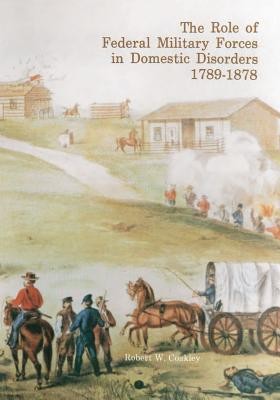
- We will send in 10–14 business days.
- Author: Robert W Coakley
- Publisher: CreateSpace Independent Publishing Platform
- ISBN-10: 1517253578
- ISBN-13: 9781517253578
- Format: 17.8 x 25.4 x 2 cm, minkšti viršeliai
- Language: English
- SAVE -10% with code: EXTRA
The Role of Federal Military Forces in Domestic Disorders, 1789-1878 (e-book) (used book) | bookbook.eu
Reviews
Description
It seems especially appropriate that during the nation's celebration of the Bicentennial of its Constitution the U. S. Army publish a history of the use of federal troops during instances of domestic disorder. Domestic disorders were very much on the minds of the Constitution's framers when they met in Philadelphia in the summer of 1787. In fact, as students of the period point out, the rebellion led by Daniel Shays in western Massachusetts the previous fall and winter must be counted as a proximate cause of the Constitutional Convention. Concern over the proper application of military force in domestic situations, especially in a new nation dedicated to personal liberty, is clearly reflected in the debate and in the Constitution as finally drafted. It is also enshrined in the document's noble preamble: "We the People of the United States in Order to ... ensure domestic Tranquility." The quest for domestic tranquility produced many troublesome and controversial incidents during the first century of our nation's history. In the account that follows the reader will find the essential elements of those incidents from the Whiskey Rebellion in 1794 to the Reconstruction that followed the Civil War and the ways in which federal military force was applied in each. The volume also clearly documents how the twin hallmarks of federal intervention in domestic affairs-the subordination of the military to civil authority and the use of minimum force-evolved according to principles enunciated in the Constitution and out of traditions established by the first commander in chief. This study is the first in a series. Nearing completion are two volumes that will carry the story to the end of World War II and on through the great domestic upheavals that marked our recent past. Their publication is in keeping with the Center's mission of relating the nation's relevant military historical experience to professional issues of today and tomorrow for the military community and the public.
EXTRA 10 % discount with code: EXTRA
The promotion ends in 21d.18:12:45
The discount code is valid when purchasing from 10 €. Discounts do not stack.
- Author: Robert W Coakley
- Publisher: CreateSpace Independent Publishing Platform
- ISBN-10: 1517253578
- ISBN-13: 9781517253578
- Format: 17.8 x 25.4 x 2 cm, minkšti viršeliai
- Language: English English
It seems especially appropriate that during the nation's celebration of the Bicentennial of its Constitution the U. S. Army publish a history of the use of federal troops during instances of domestic disorder. Domestic disorders were very much on the minds of the Constitution's framers when they met in Philadelphia in the summer of 1787. In fact, as students of the period point out, the rebellion led by Daniel Shays in western Massachusetts the previous fall and winter must be counted as a proximate cause of the Constitutional Convention. Concern over the proper application of military force in domestic situations, especially in a new nation dedicated to personal liberty, is clearly reflected in the debate and in the Constitution as finally drafted. It is also enshrined in the document's noble preamble: "We the People of the United States in Order to ... ensure domestic Tranquility." The quest for domestic tranquility produced many troublesome and controversial incidents during the first century of our nation's history. In the account that follows the reader will find the essential elements of those incidents from the Whiskey Rebellion in 1794 to the Reconstruction that followed the Civil War and the ways in which federal military force was applied in each. The volume also clearly documents how the twin hallmarks of federal intervention in domestic affairs-the subordination of the military to civil authority and the use of minimum force-evolved according to principles enunciated in the Constitution and out of traditions established by the first commander in chief. This study is the first in a series. Nearing completion are two volumes that will carry the story to the end of World War II and on through the great domestic upheavals that marked our recent past. Their publication is in keeping with the Center's mission of relating the nation's relevant military historical experience to professional issues of today and tomorrow for the military community and the public.


Reviews